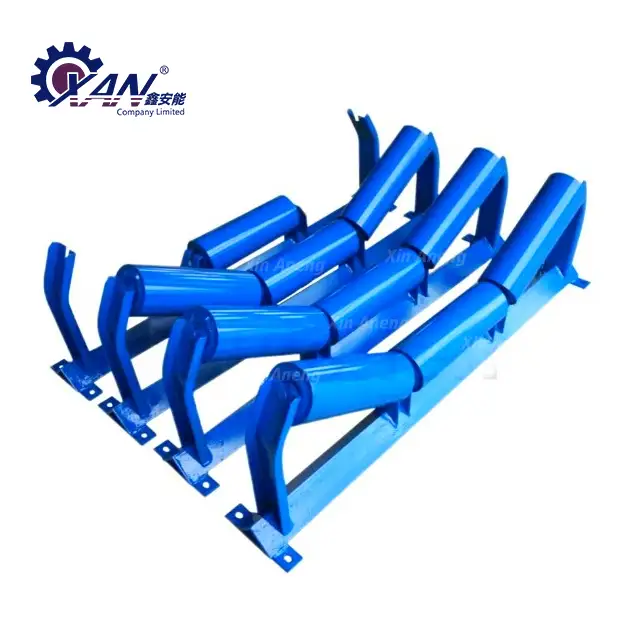How to Maintain Conveyor Idlers for Maximum Longevity
2024-08-15
Conveyor idlers are critical components in any conveyor system, supporting the belt and ensuring the smooth transport of materials. However, like all mechanical parts, idlers are subject to wear and tear, and their failure can lead to costly downtime. Regular maintenance is key to prolonging the life of conveyor idlers and ensuring the efficient operation of your conveyor system. In this blog, we'll discuss some essential maintenance practices for conveyor idlers.

1. Regular Inspection
The first step in maintaining conveyor idlers is to perform regular inspections. This involves visually checking the idlers for any signs of wear, damage, or misalignment. Look for the following:
- Unusual Noises: Grinding, squeaking, or rattling noises may indicate that an idler is damaged or that its bearings are failing.
- Belt Misalignment: If the belt is not running straight, it could be due to misaligned idlers. Misalignment can cause uneven wear on the belt and increase the risk of belt slippage.
- Excessive Wear: Check the surface of the idlers for signs of wear, such as grooves or flat spots. Worn idlers can increase friction and reduce the efficiency of the conveyor system.
2. Lubrication
Proper lubrication is essential to the smooth operation of conveyor idlers. Bearings are a critical part of idlers, and without adequate lubrication, they can seize up, leading to increased friction and eventual failure. Here are some tips for effective lubrication:
- Use the Right Lubricant: Choose a lubricant that is suitable for the operating environment and the specific type of idlers you are using. For example, high-temperature environments may require special high-temperature lubricants.
- Follow the Manufacturer’s Guidelines: Always follow the manufacturer’s recommendations for lubrication intervals and the type of lubricant to use.
- Check Seals: Ensure that the seals around the bearings are intact to prevent contaminants like dust and moisture from entering and compromising the lubrication.
3. Cleaning
Keeping conveyor idlers clean is another important maintenance practice. Dirt, dust, and debris can accumulate on idlers, leading to increased wear and reduced efficiency. Regular cleaning will help prevent these issues:
- Remove Debris: Use a soft brush or compressed air to remove any debris that has accumulated on the idlers. Avoid using water or harsh chemicals that could damage the idlers.
- Check for Build-Up: Look for any build-up of material on the idlers, especially in wet or sticky environments. Build-up can cause the idlers to become unbalanced and lead to belt misalignment.
4. Replace Worn Idlers
Despite regular maintenance, idlers will eventually wear out and need to be replaced. It's important to replace worn idlers promptly to avoid further damage to the conveyor system. Signs that an idler needs to be replaced include:
- Excessive Noise: If an idler is making excessive noise despite regular lubrication, it may be time to replace it.
- Visible Damage: Cracks, dents, or other visible damage are clear indicators that an idler needs to be replaced.
- Increased Vibration: If an idler is causing increased vibration in the conveyor system, it may be due to internal damage or wear.
5. Record Keeping
Keeping detailed records of maintenance activities is crucial for the long-term management of conveyor idlers. By tracking when each idler was inspected, lubricated, or replaced, you can identify patterns in wear and make informed decisions about when to perform maintenance. This can help prevent unexpected failures and extend the life of your conveyor idlers.
Conclusion
Maintaining conveyor idlers is essential for the efficient operation of any conveyor system. By performing regular inspections, ensuring proper lubrication, keeping idlers clean, replacing worn components, and maintaining detailed records, you can maximize the longevity of your conveyor idlers and avoid costly downtime. A well-maintained conveyor system not only improves productivity but also reduces the overall cost of ownership. Implementing these best practices will help you get the most out of your conveyor idlers and ensure a smooth, trouble-free material handling process.


